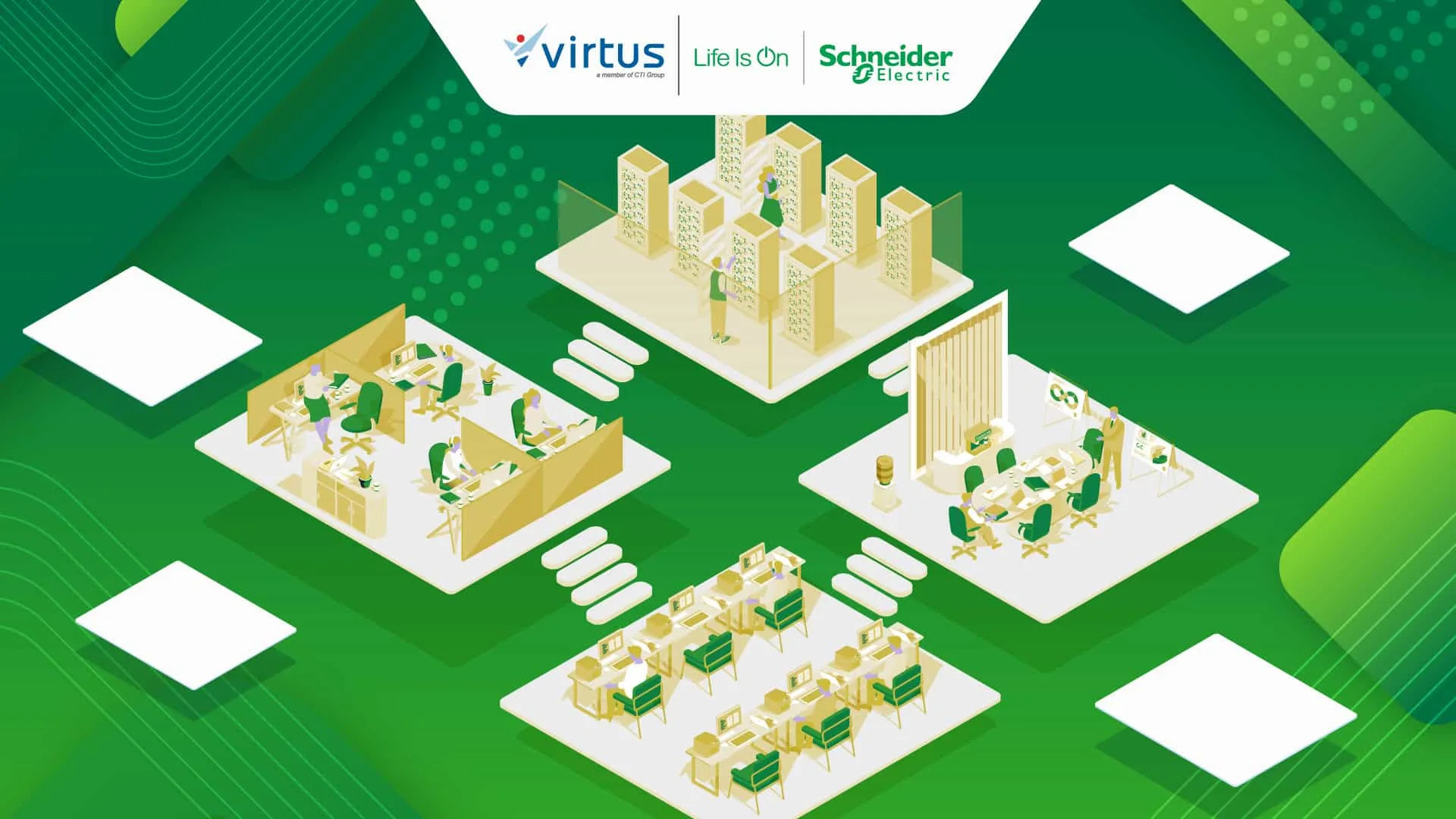In recent years, the business world has evolved faster than anyone anticipated. Companies are expected to be more agile, responsive, and always ready to serve customers—no matter where they are.
But challenges arise when all this still relies on centralized IT infrastructure—systems that were never designed for the real-time workloads and data streams coming from edge locations. The result? Increased latency, higher downtime risks, and ballooning bandwidth costs.
This is the gap that edge infrastructure aims to close—a new approach that brings data processing closer to its source. But what exactly is edge infrastructure, and why is it becoming more critical than ever? Read on to find out.
What Is Edge Infrastructure, and Why Does It Matter Now?
Imagine if every piece of data from a store, factory, or remote site had to be sent all the way to a central server or cloud to be processed. This process takes time, depends heavily on internet connectivity, and often leads to delays—especially during outages or network slowdowns. This is where edge infrastructure steps in.
Edge infrastructure refers to a technology approach that enables data to be processed at or near the location where it is generated—using local computing devices or micro data centers. This allows companies to make real-time decisions without depending on central servers.
Why is this important now? Because businesses are becoming more distributed, devices are multiplying, and customer expectations are higher than ever. From IoT sensors in factories and point-of-sale systems in stores to surveillance cameras, all generate huge amounts of data—much of which needs to be processed immediately and locally to ensure fast, uninterrupted service.
5 Common Challenges Companies Face in Managing Modern Data Infrastructure

Digital transformation is meant to accelerate business. But many organizations are still grappling with complex, layered challenges—especially as legacy systems struggle to keep up with today’s distributed, real-time data operations.
1. Limited Visibility
Many companies still operate in silos—between factories, branches, and service points. As a result, central IT teams lack full real-time visibility across their operations.
2. Over-Reliance on Cloud Without Local Backup
While cloud is central to most digital strategies, many companies rely too heavily on cloud or data center connectivity. Any network issue or high latency can immediately disrupt edge services like retail stores or manufacturing lines.
3. Rising Bandwidth Costs
Transmitting all operational data to the cloud or data centers requires significant, stable bandwidth. In the age of big data and video analytics, this becomes not just a technical issue, but a recurring cost burden.
4. Limited IT Staff at Edge Locations
Many operational sites, especially in remote or rural areas, lack on-site IT support. When problems arise, troubleshooting depends on central teams or physical visits—causing delays and higher costs.
5. Operational Downtime
Every minute of downtime in sectors like retail, logistics, or manufacturing means lost revenue, broken customer experiences, and potential brand damage.
So, what’s the solution? Edge infrastructure enables companies to bring computing and analytics closer to data sources—providing a more adaptive, autonomous, and cost-efficient way to manage distributed environments without sacrificing centralized control.
How Edge Infrastructure Solves Modern Business Data Challenges
A true edge solution isn’t just about placing hardware in remote locations. It must deliver three core characteristics to meet today’s business needs:
1. Responsiveness
Edge computing must support real-time data processing—not just storing, but interpreting and triggering immediate action on-site. This is vital for retail, automation, and public service applications.
2. Scalability
The growing number of operational sites and data volume shouldn’t slow down expansion. Modern edge infrastructure must be modular and easy to scale—without massive migration projects.
3. Intelligence
By integrating smart technologies like cloud-based monitoring, automated maintenance, and local AI, edge nodes can become powerful decision-making hubs—without always needing central instruction.
5 Real-World Applications of Edge Infrastructure Across Industries

1. Retail: Always-On Store Operations
In retail, edge computing enables each store to process transactions, manage inventory, and analyze customer behavior locally. Even during internet outages, operations continue without compromising customer experience.
2. Manufacturing: Real-Time Automation and Quality Control
Factories are now filled with sensors streaming data from production lines. With local micro data centers, this data can be immediately analyzed for quality assurance, predictive maintenance, and energy optimization—without waiting for central response.
3. Healthcare: Faster Medical Decisions
Clinics or hospitals in remote areas can process patient data, lab results, and medical imaging on-site—accelerating critical decisions and reducing dependence on cloud connectivity.
4. Logistics & Transportation: Uninterrupted Delivery Chains
At distribution centers, edge infrastructure supports real-time monitoring of inventory, vehicles, and local weather. This helps prevent delivery delays and keeps operations smooth.
5. Mining & Energy: Autonomous Operations in Harsh Environments
Industries operating in remote areas, like mining or oil fields, require systems that function independently. With edge, monitoring and control systems remain operational—even in the absence of internet or under extreme conditions.
Read More: What Is an Edge Network and Why Is It Crucial for Modern Business Network Infrastructure?
Schneider Electric: Proven Edge Infrastructure for Industrial Needs
This is where Schneider Electric makes a real impact. With Schneider Edge Infrastructure, businesses gain an integrated, modular ecosystem combining hardware, software, and remote monitoring capabilities—ready to deploy, scale, and manage in any edge environment.
These solutions are already proven in various sectors:
- In retail, Schneider micro data centers keep transactions running even during cloud outages.
- In factories, EcoStruxure enables real-time quality control from production sensors.
- In rural clinics, integrated UPS ensures uptime and local data processing.
- In logistics, remote visibility over assets and vehicles is maintained.
- Even in extreme environments, Schneider edge units remain resilient thanks to rugged design and built-in power management.
Key Benefits
- Ready to Deploy
Pre-integrated systems mean no need to build infrastructure from scratch—just install and run.
- Highly Scalable
Modular design allows growth from a single store to a nationwide edge network.
- Real-Time Monitoring & Remote Support
EcoStruxure Monitoring provides full visibility from a central dashboard—for performance, power, and alerts.
- Physical & Cybersecurity Integration
Schneider edge nodes come with access control, environmental sensors, and cybersecurity features—vital for unguarded or remote sites.
Core Components
- EcoStruxure Monitoring Platform
Delivers end-to-end visibility into edge infrastructure—covering temperature, power load, and physical access security. The platform also supports centralized, real-time energy efficiency monitoring and asset management, enabling smarter infrastructure planning.
- Integrated UPS Systems
- Ensures reliable backup power to maintain operational continuity, especially in critical sectors such as healthcare, finance, manufacturing, and public services. The integrated UPS keeps systems running during power disruptions, enhancing the overall stability of edge environments.
- Modular Micro Data Center
A fully integrated rack solution combining power, cooling, monitoring, and security in a compact form. Designed for rapid deployment in edge locations such as retail stores, banking branches, factories, mining sites, and even field containers—without the need for a dedicated server room.
Build a Scalable and Responsive Edge Infrastructure with Virtus
As an official partner of Schneider Electric, Virtus Technology Indonesia (Part of CTI Group) brings deep expertise in deploying edge infrastructure across Indonesian industries. We don’t just sell solutions—we help develop a transformation roadmap aligned with your business needs, budget, and operational complexity.
Ready to build smarter, more responsive edge infrastructure? Discover how Schneider’s integrated solutions—delivered by Virtus—empower your business.
Author: Ary Adianto
Content Writer, CTI Group

